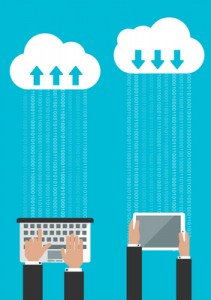
With the growth and expansion of the Internet, it is important to make sure that your business has a policy in place to protect its assets.
Depending on your business, an Internet Usage Policy (IUP) can be long and drawn out or short and to the point.
An IUP will provide your employees with guidelines on what is acceptable use of the Internet and company network. IUPs not only protect the company, but also the employee.
Employees are informed and aware of what is acceptable when it comes to websites and downloading files or programs from the Internet.
When employees know there will be serious consequences for breaking the IUP, such as suspension or termination of employment, companies tend to notice a decrease in security risks due to employee carelessness.
You will need to make sure your IUP covers not only company equipment and your network, but also employee-owned devices such as smart phones and tablets. You may be surprised at the number of employees that feel they do not have to follow the IUP because they are using their own device to surf or download from the Internet.
Make sure you address proper usage of company-owned mobile devices. Your business may have satellite employees or a traveling sales force. Even when they are away, they need to be aware they are still representatives of the business and must follow the business IUP.
After all, it would not go over well if your sales staff was giving a presentation to a prospective client and suddenly, “adult content” ads popped-up on the screen because one of your employees was careless in their web habits.
The downloading of files and programs is a security risk in itself. Private, internal company documents and correspondence downloaded from your company’s network can become public, causing unrepairable damage.
On the same thought, employees downloading from the Internet open your company’s network up to malware attacks and infections.
There are a lot of hackers that prey upon the absent-minded employee downloading a video or song file by hiding a piece of malware within the download. Once the malware makes it into your network, there’s no telling what damage it can cause.
As for non-work related use of the company network and Internet, make sure your employees know there is no expectation of personal privacy when using the company’s network and Internet connection.
Make it well-known that the network and Internet are in place to be used for work purposes only. Improper use of the network can reduce bandwidth throughout the company network.
This includes all mobile devices owned by the company. This way, your employees know that no matter where they are they still must follow the guidelines of the IUP.
Make sure all of your employees sign the IUP and fully understand what it is they are signing. Make sure you answer any and all questions they may have.
This will help clear up any confusion your employees may have. This way, there can be no excuses as to why the IUP was broken.
Whenever you update the IUP, make sure you have all of your employees sign and understand the new additions and/or changes to the IUP. It may seem like overkill, but you’ll be glad you did if you ever run into any violations of your company’s IUP.
For assistance in creating Internet Usage Policies or if you have any questions, call the experts at Tech Experts: (734) 457-5000.


 Today’s workers expect to have 24/7 access to their information. They want to be able to catch up on emails on the evening train ride home or access information while away from the office.
Today’s workers expect to have 24/7 access to their information. They want to be able to catch up on emails on the evening train ride home or access information while away from the office.

 Just purchasing a network firewall will not stop an attacker from walking into your organization and physically plugging his computer into your network.
Just purchasing a network firewall will not stop an attacker from walking into your organization and physically plugging his computer into your network. Before purchasing any security device, it’s best to consult with a security professional. Have penetration tests performed and a vulnerability assessment report generated.
Before purchasing any security device, it’s best to consult with a security professional. Have penetration tests performed and a vulnerability assessment report generated. That way, if your data is comprised either through internal access or external, it will become very difficult to use the data that was stolen.
That way, if your data is comprised either through internal access or external, it will become very difficult to use the data that was stolen.